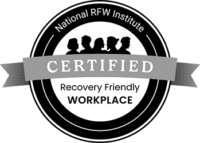Opioid Use Disorder: The Facts You Should Know
Prescription opioid abuse has been a growing national problem over the last 20 years and the healthcare industry is focusing on providing support to those who suffer from Opioid Use Disorder (OUD). According to the National Institute of Drug Abuse, deaths related to prescription opioid overdose have increased by over 495% since 1999 and are currently estimated at around 17,000 deaths a year across all ages. Total deaths related to opioid overdose in the United States since 1999 are almost 400,000 people.
Additionally, the CDC estimates that more than 11 million people abuse opioids per year. Substance abuse therapy through both clinical and medical intervention is the primary solution being explored and advanced to tackle this growing national crisis, with more direct patient support and engagement being the focal point of the advancements in therapy.
When Did This Issue Start to Escalate?
Origins of addiction can vary, and it has been difficult to identify a singular trigger of OUD, but risk factors include chaotic home and community environments, peer influences, genetic predispositions to addictive behavior, and victims of mental health disorders. With the rising epidemic of heroin use, it is concerning that 1 in 25 people aged 12 – 17 suffer from substance abuse disorder. The increased accessibility to opioids through various avenues, such as illegal distribution and second-hand purchasing of prescription opioids, and the growing presence of heroin in the illegal drug trade, has been a major contributing factor in the epidemic of Opioid Abuse Disorder.
The CDC has broken down the overall increase of opioid abuse deaths over the last 20 years into three waves. The first initial wave of opioid abuse came in the 1990s with a dramatic increase in prescription opioid abuse. The second wave was marked in 2010 with a dramatic rise in deaths related to heroin overdose. The last marked wave by the CDC in relation to opioids was in 2013 when there was a spike in deaths related to synthetic opioids such as fentanyl. This period time and breakdown is accounting for more than 400,000 deaths caused by opioid overdose.
Where Do We Go From Here?
The focus area of addressing this national crisis should be on the human level. The people suffering from OUD need to be provided with the appropriate support system and tools required to fight the addiction and to not only get on the road to recovery but stay on that path. Opioid Use Disorder should not only be addressed when and if the victims of the disorder are actively at therapy because the addiction follows them into the other facets of their lives as well. Those who suffer from OUD need the same type of support and interactive care plan that a patient with any other serious medical condition would.
GoMo Health offers this type of patient support through Personal Concierge™. This interactive program is able to respond to the needs of the patient in real time and is personalized to their health. It can aid in impulse management and support as it can directly respond to a patient in a specific moment of need with care communications.







Find Us Online